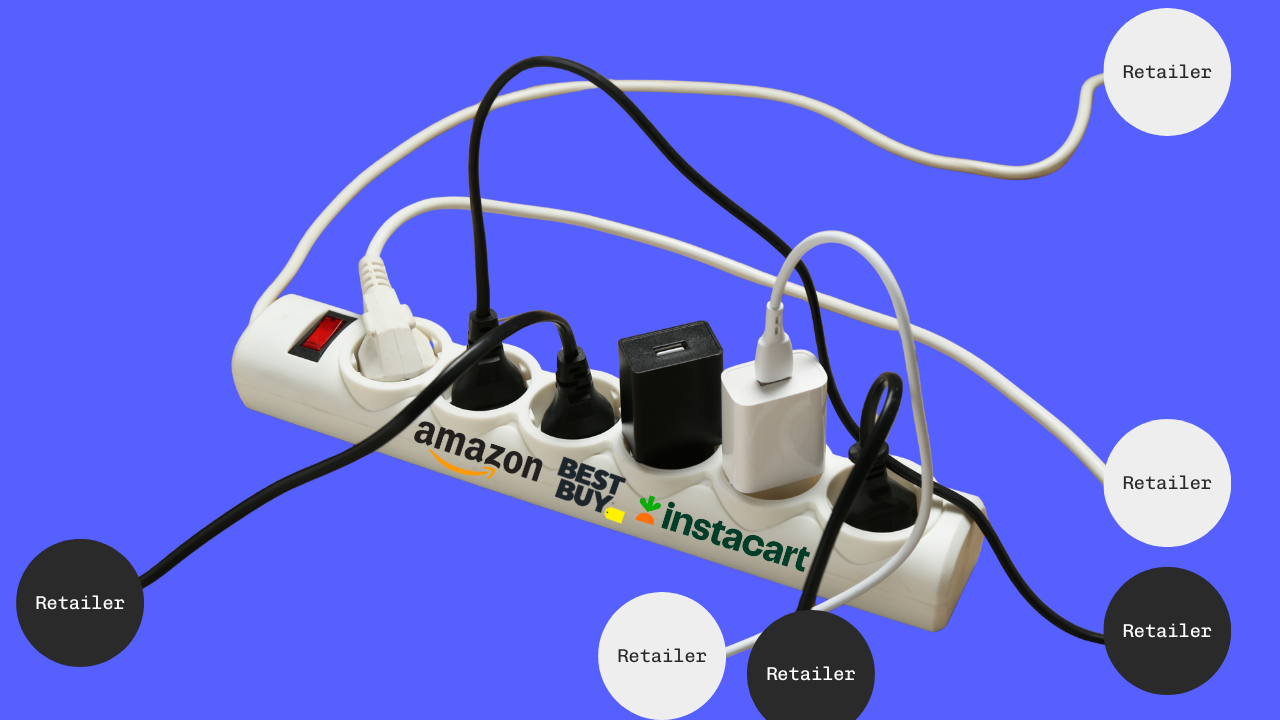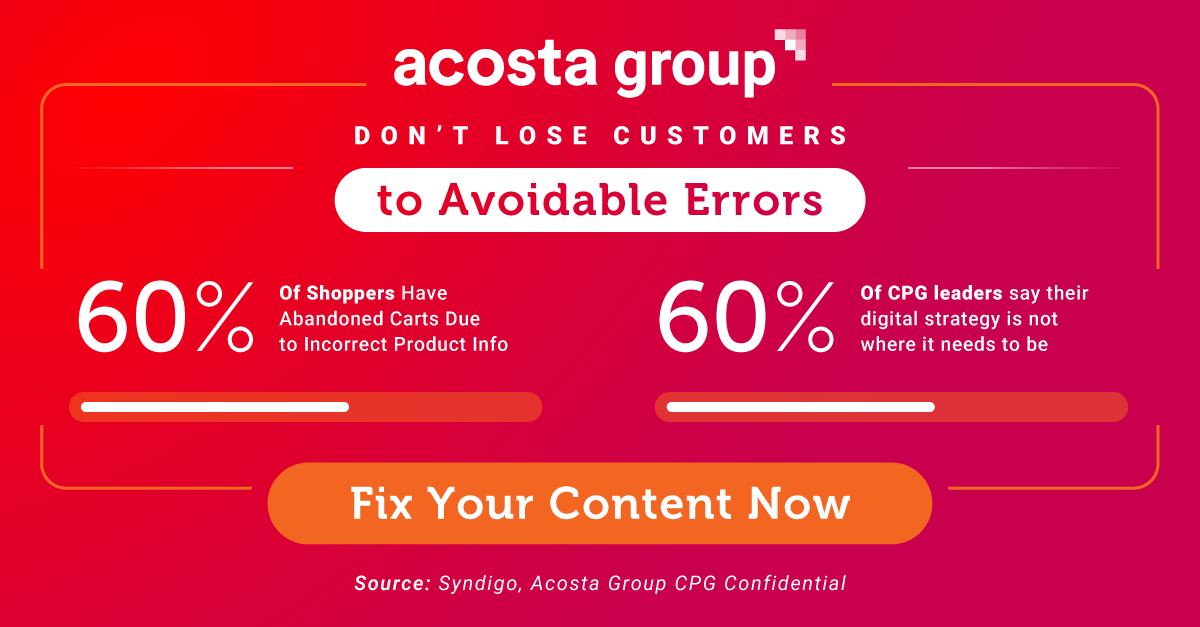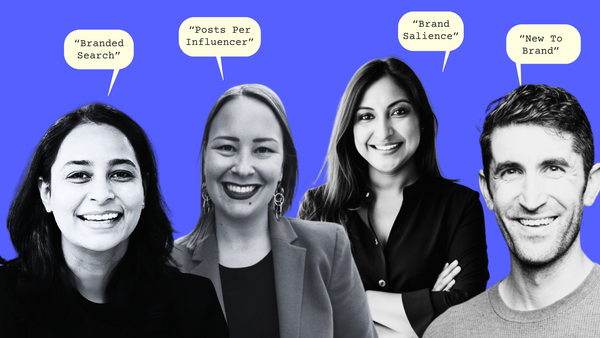Some Retailers Want to Power Other Retailers' Ad Businesses. Will It work?
Amazon, Instacart, and Best Buy want to power other retailers' ad businesses. Will it fly?

"If you could wave a magic wand and ten more retail media networks suddenly met your standards—would you start spending with them?"
The retail media leader at a major CPG conglomerate didn't hesitate when they replied: "Absolutely not."
This brand already works with six RMNs—right at the industry average reported across many media buyer surveys. The problem isn't that other networks fail to measure up. The problem was that even if they did, the operational cost of planning, buying, and reporting across fragmented systems simply isn't worth it, even for huge brands with vast internal capabilities.
That conversation was ringing in my ears last week as I did a LinkedIn livestream with Andreas Reiffen, CEO of ad-tech firm Pentaleap (a client of mine). We started our livestream talking about trade spend versus retail media, and the topic of multi-retailer networks came up.
Andreas pointed out an interesting history lesson: "The irony is this is where we all come from. We just killed that ad network approach. When Criteo acquired HookLogic, this was an ad network. In the meantime, Amazon had grown big and everyone wanted to copy Amazon. So it's absolutely ironic that it's Amazon now that tries to fix the problem that they accidentally created in the market—the whole fragmentation problem—with the ad network approach."
Perhaps we're coming full circle, just with better technology and first-party retail data.
Three Retailer-Led Network Models Taking Shape
Before we dive into these emerging models, it's worth noting what already exists. Platforms like Criteo and Epsilon have long offered a connective layer across many retailers—aggregating inventory and providing unified buying interfaces.
What's different about these three approaches is the shift in who controls the platform layer. We're seeing retailers themselves become infrastructure providers (Amazon, Best Buy) alongside technology platforms purpose-built for retail media (Instacart). That shift changes the power dynamics, data ownership, and competitive calculus in meaningful ways.
Amazon Retail Ad Service: The Frenemy
Amazon syndicates its advertising infrastructure to other retailers. Macy's recently became a partner, allowing advertisers to buy Sponsored Product placements on Macys.com directly through the Amazon Ads console—the same system they already use for Amazon campaigns.
For brands, this promises unified buying across multiple retail properties using tools they already know. But that also means that retailers must trust their largest and fiercest competitor to fairly distribute advertiser budgets, protect strategic intelligence, and not use partnership data to inform Amazon's own merchandising decisions.
Best Buy's Platform Vision: The Category Specialist
Best Buy is positioning itself as infrastructure that other retailers can plug into for data collaboration and audience extension.
When I interviewed Lisa Valentino, Executive Vice President of Best Buy Ads, for their "We Got Next" showcase, she was explicit: "If another retailer or another RMN wants to work with us to build out a data set of customers that might purchase across multiple retailers, we're all in."
Best Buy's category focus (electronics) creates less competitive overlap than Amazon, potentially making it a more palatable partner for grocery, apparel, or QSR retailers. But so far this remains more vision than reality—no retailers have publicly joined the platform.
Instacart's Carrot Ads: The White-Label Play
Instacart—itself a marketplace rather than a traditional retailer—built white-label technology that enables retailers to operate their own branded retail media network while plugging into shared infrastructure and advertiser demand.
This positioning matters. Unlike Amazon, Instacart doesn't compete with grocers for shelf space or customer loyalty. It's building the rails, not running the trains.
April Lane, Thrive Market's Chief Merchandising Officer, told me why they chose Carrot Ads: "For our size and scale, it doesn't make sense to reinvent the wheel. It also, frankly, from a brand perspective, doesn't make sense for us to stand up a separate platform that requires a brand to learn yet another tool and system."
Retailers maintain control over their data and branding while accessing Instacart's self-service tools, measurement capabilities, and advertiser demand already flowing through the Instacart Ads network. The catch is that retailers are dependent on Instacart's roadmap, pricing, and technology standards.
Did you know that 60% of shoppers abandon carts when product info is wrong? Before you ramp up your ad spend, fix the shelf. Acosta Group’s award-winning Connected Commerce crew is trusted by brands like Coca-Cola and Sanofi to deliver critical content updates. Acosta Group handles it all, then layers on media buying.
Learn more about Acosta Group’s Connected Commerce capabilities.
Does 'Retailer-As-Platform' Actually Solve the Operational Burden Problem?
For true long-tail retailers—the ones where brands need presence but can't justify dedicated headcount—networks could work. As Andreas noted during our conversation, "If Home Depot is one out of 10 different retailers for me, I need something that is easier and I would want to put my money into one system and spend it across a network."
But for strategic retail relationships? Networks don't replace the need for custom planning, joint business planning conversations, and direct merchant relationships.
Andreas was careful to emphasize this split: "Such a new ecosystem would not mean that the old one would be replaced. It would simply be complementary."
What we're really talking about is a two-tier future: strategic retailers that brands manage directly, and a networked middle tier where programmatic-like buying provides efficient access to smaller players.
Platform-Led vs. Peer Federations: Why the Distinction Matters
I've written extensively about how retail media consortiums—where groups of retailers form peer-to-peer collectives to pool data and audiences under mutual governance—could solve fragmentation.
These platform-led models are fundamentally different. Amazon, Instacart, and Best Buy are centralizing coordination by providing their own technology platforms and campaign management capabilities. This creates a hub-and-spoke model with a dominant player at the center, not a neutral federation of equals.
The platform-led approach puts convenience ahead of autonomy. Brands get simpler buying, but retailers surrender control to whoever runs the hub. That's a different bet than a federation where no single player sets the rules—and it explains why adoption has been cautious.
For media buyers, while these models promise broader retailer reach with less operational overhead, they also create new dependencies on the dominant platform's commercial terms, data standards, and roadmap priorities. Especially when that platform is Amazon.
Where This Goes
Right now, this is a nascent model. Best Buy hasn't announced any retailers joining its platform. Amazon's Retail Ad Service has signed just a handful of partners. Instacart's Carrot Ads is proving the white-label approach works, but adoption remains limited.
Can retailers overcome their instinct to hoard data and maintain walled gardens? As Andreas put it: "It's clear that what we have today is not what the ecosystem will look in the future. There will be a balance of the two and a coexistence of those two mechanisms."
The ad network boom of the 2000s gave way to walled gardens when Amazon proved the value of closed-loop attribution and first-party data. Now those same walled gardens are rebuilding network infrastructure to solve the fragmentation they created.
Time will tell if brands actually want what these platforms are building.
More from me on this topic:






